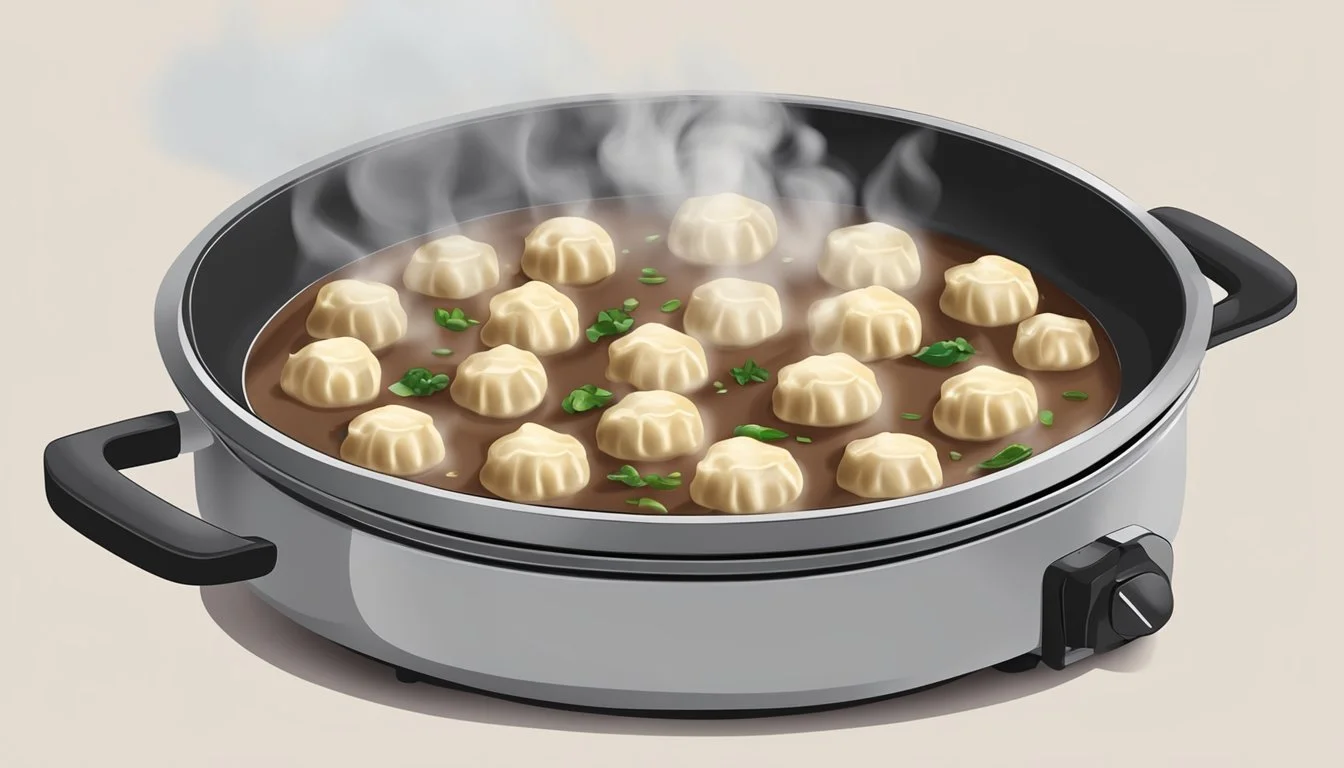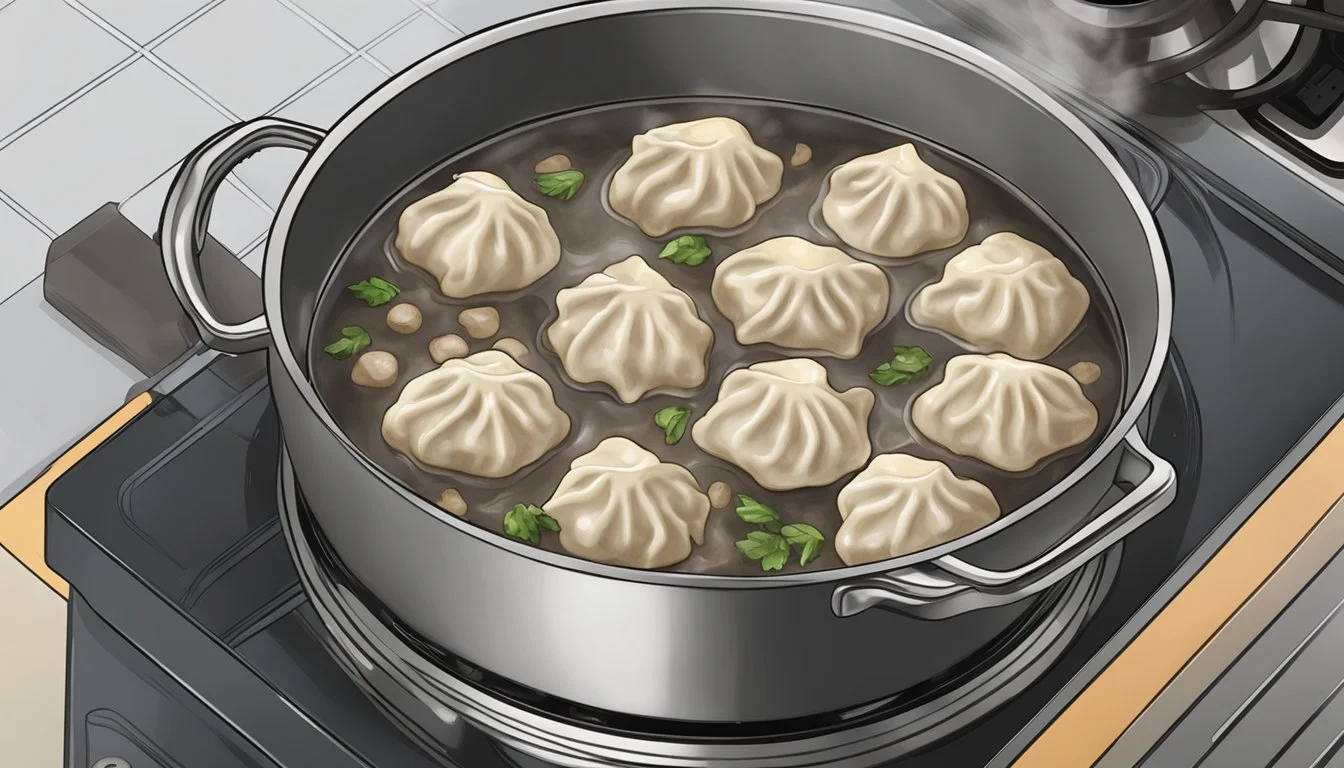How to Reheat Beef and Dumplings Bites
Expert Tips for Perfect Results
For those seeking to enjoy their leftover beef and dumplings bites, the key is balancing texture and flavor while reheating. To achieve that freshly made taste, one effective approach is using a frying pan. Start by lightly browning the bites on all sides to ensure they regain their crispy texture. Once browned, add a small amount of water to create steam and cover the pan with a lid, allowing the bites to steam for a couple of minutes until thoroughly heated.
An air fryer also delivers excellent results for reheating beef and dumplings bites. Preheat the air fryer to 350°F and place the bites in a single layer in the basket. This method ensures even heating and helps maintain the crunchy exterior. Flip the bites halfway through the reheating process to ensure even cooking on both sides.
Alternatively, using a steamer can help maintain the tenderness of the beef and dumplings. Line the steamer with cabbage leaves to prevent sticking and enhance flavor. Arrange the bites in a single layer and steam for about 5-10 minutes. Each of these methods helps retain the deliciousness of your beef and dumplings bites, ensuring a satisfying culinary experience.
Understanding the Basics of Dumplings
Dumplings are versatile and delicious, with various types offering different textures and tastes. Proper reheating preserves the integrity of both the meat and dough, maintaining the dumplings' flavors and textures. Correct storage is essential to prevent spoilage and ensure freshness.
Types of Dumplings and Their Textures
There are various types of dumplings, each with unique characteristics. Chinese dumplings such as jiaozi are often robust, with thick dough and hearty fillings. Japanese gyoza feature thinner dough and are typically pan-fried for a crispy texture. Xiao long bao, or soup dumplings, have delicate, thin dough that encases a savory broth.
The texture can vary from chewy to crispy depending on cooking methods. For instance, steaming generally results in a soft, tender texture, while frying adds a crispy exterior. Understanding these differences helps in choosing the best reheating method.
Effects of Reheating on Meat and Dough
Reheating impacts both the meat filling and the dough. For meat-filled dumplings, it’s essential to heat them evenly to prevent drying out. Steaming is often recommended as it maintains moisture content. Frying or air frying can achieve a crispy texture but may risk overcooking the meat.
Steamed dumplings like jiaozi and xiao long bao benefit from gentle reheating methods that preserve their softness. In contrast, fried dumplings such as gyoza can be crisped up again in a pan. Proper care ensures the meat retains its flavor while the dough remains pliable yet firm.
Storing for Optimal Freshness
Storing dumplings correctly is crucial for maintaining their quality. Dumplings should be placed in an airtight container and stored in the refrigerator if consumed within a few days. For longer storage, they can be kept in the freezer.
To freeze, arrange dumplings in a single layer on a baking sheet to prevent them from sticking, then transfer to a container once frozen. This method keeps dumplings fresh and prevents them from becoming soggy or freezer-burned. Proper storage helps in retaining the original taste and texture when reheated.
Preparing Dumplings for Reheating
Proper preparation is crucial to ensure that beef and dumpling bites retain their delicious taste and texture. This section focuses on thawing frozen dumplings and getting them ready for reheating.
Thawing Frozen Dumplings
When working with frozen dumplings, ensure they are thawed correctly to avoid uneven heating and potential issues with texture. Remove the frozen dumplings from the freezer and place them on a plate. Let them sit at room temperature for 15 to 20 minutes. This gradual thawing process helps prevent the dumplings from becoming too soggy when reheated.
Avoid using a microwave to thaw frozen dumplings, as it can lead to partial cooking and ruin texture. If you’re short on time, you can place them in a sealed plastic bag and submerge in cold water for 10 minutes. Always handle with care to keep the dumplings intact.
Preparation for Reheating
Once the dumplings are thawed, take the necessary steps to ensure they reheat well. For fried dumplings, lightly oil a pan and arrange the dumplings in a single layer. Heat the pan over medium-high heat until the dumplings are golden brown on both sides. Add a splash of water, cover, and steam for 2 to 3 minutes to warm the filling thoroughly.
For steamed dumplings, use a steamer basket. Line the basket with parchment paper to prevent sticking. Place the dumplings inside, ensuring they don’t touch each other. Steam over boiling water for approximately 5 to 7 minutes.
If using an air fryer, preheat it to 350°F. Arrange the dumplings in a single layer in the basket. Heat for 3 minutes, flip, and then heat for an additional 3 minutes. This method ensures even cooking and a nice, crispy exterior.
Reheating Methods and Techniques
When it comes to reheating beef and dumpling bites, choosing the right technique can ensure they remain delicious and retain their texture. Here are various methods tailored to specific types of dumplings, to maintain that freshly made taste.
Steaming Dumplings
Steaming is ideal for maintaining the dumplings' moisture. Use a steamer or bamboo steamer lined with parchment paper or cabbage leaves to prevent sticking.
Fill a pot with about an inch of water and bring it to a simmer.
Place the dumplings on a steaming rack without overcrowding.
Cover and steam for 5 to 10 minutes, depending on the size and density of the dumplings.
This method ensures the dumplings stay soft and succulent.
Boiling Dumplings
Boiling is another effective way to reheat dumpling bites, particularly for previously boiled or fresh dumplings.
Boil a pot of water.
Add the dumplings in small batches to avoid overcrowding the pot.
Let them simmer for 2-3 minutes until heated through.
Drain them on a paper towel to remove excess water before serving.
This method keeps the dumplings tender and moist.
Frying Dumplings
Frying is perfect for achieving a crispy texture, especially for pan-fried or fried dumplings.
Heat oil in a non-stick frying pan over medium heat.
Place the dumplings in the pan without overcrowding them.
Fry each side for approximately 2-4 minutes until they are golden brown.
Optionally, add a bit of water to the pan and cover it to steam the dumplings for an additional 2-3 minutes.
This method gives the dumplings a crispy exterior while keeping the insides moist.
Baking and Microwaving Dumplings
Baking and microwaving provide quick and easy methods, particularly for those looking for convenience.
Baking: Preheat the oven to 350°F (175°C). Place the dumplings on a baking sheet and bake for 10-12 minutes.
Microwaving: Place the dumplings on a microwave-safe plate and cover them with a damp paper towel. Heat on high for 2-3 minutes.
These methods are less traditional but effective for quick reheating.
Using an Air Fryer for Dumplings
Using an air fryer is an excellent way to achieve a crispy texture without the need for excessive oil.
Preheat the air fryer to 350°F (175°C).
Lightly brush the air fryer basket with vegetable oil to prevent sticking.
Place the dumplings in the air fryer basket in a single layer.
Heat for 3 minutes, then flip the dumplings and reheat for another 3 minutes.
This method ensures a consistent crispiness, making it a great option for reheating dumplings.
Each reheating technique offers its unique benefits, ensuring your beef and dumpling bites remain flavorful and satisfying.
Ensuring Quality and Safety
To ensure quality and safety when reheating beef and dumpling bites, focus on reaching the optimal internal temperature and preventing foodborne illness.
Reaching Optimal Internal Temperature
Reheating beef and dumpling bites to the correct internal temperature is crucial. Use a food thermometer to check that the beef reaches at least 165°F (74°C). This temperature ensures that the meat is heated thoroughly and any potential bacteria are killed.
Various cooking methods like steaming, pan-frying, or microwaving can be used. Steaming helps retain moisture, while pan-frying can add a crispy texture. For microwaving, use a microwave-safe dish, add a splash of water, and cover it with a lid or microwave-safe wrap to trap steam. Always stir or rotate the food halfway through the reheating process to promote even heating.
Preventing Foodborne Illness
Preventing foodborne illness starts with proper food handling. Thaw frozen beef and dumpling bites in the refrigerator, not at room temperature, to prevent the growth of harmful bacteria.
When reheating, ensure that the bites reach a safe internal temperature to kill any lingering bacteria. Avoid cross-contamination by using clean utensils and surfaces. Wash hands thoroughly before and after handling the food.
It's also important not to reheat the meat multiple times as each reheating process can increase the risk of foodborne pathogens multiplying. Store leftovers promptly in the refrigerator and consume within 3-4 days to maintain quality and safety.
Final Tips for Best Results
Reheating beef and dumpling bites requires specific techniques to prevent sogginess, dryness, and achieve a crisp, golden-brown texture.
Preventing Soggy or Dry Ends
To ensure beef and dumplings do not become soggy, it's important to avoid overheating. Using a steamer lined with cabbage leaves can prevent sticking and enhance flavor. For a microwave, cover the dumplings with a damp paper towel to keep moisture even.
Dry ends can be avoided by not reheating at too high a temperature. In an oven, set to 350°F (175°C) and place dumplings on parchment paper, ensuring they don't touch. This method keeps them moist yet properly heated without overcooking. Pan-frying in a lightly oiled skillet also helps maintain adequate moisture levels while reheating.
Achieving Crispy Texture
Achieving a crispy texture can significantly enhance the enjoyment of beef and dumpling bites. When using an air fryer, preheat to 350°F, brush the basket with vegetable oil, and place dumplings in a single layer. Heat for three minutes on each side to attain a crispy bottom and overall golden brown look.
For pan-frying, heat oil in a non-stick skillet over medium heat. Fry the dumplings for 2-4 minutes on each side until they achieve the desired crispiness. For oven reheating, after the initial ten minutes at 350°F, broiling for a few minutes can add a satisfying crunch.
Properly executed, these methods will yield a delightful combination of textures with each bite.
Accompaniments and Serving Suggestions
For serving beef and dumplings bites, it's essential to consider side dishes and presentation to enhance the dining experience. Thoughtful accompaniments and garnishes can elevate the meal.
Choosing Complementary Side Dishes
Selecting suitable side dishes adds variety and balances flavors. Simple vegetables such as roasted carrots or steamed broccoli complement the rich taste of beef. Green beans sautéed with garlic offer a vibrant, yet subtle flavor contrast.
Cabbage leaves stuffed with a grain or cheese mixture can provide an earthy, creamy side that contrasts well with beef. Mashed potatoes or cheesy polenta offer comforting textures. For a lighter option, a fresh fruit salad made with apples and grapes can cleanse the palate between bites.
Presentation and Garnishes
Presentation is crucial in making the meal visually appealing. Serve the beef and dumplings bites on a large platter, garnished with fresh herbs such as rosemary or thyme. Use small cabbage leaves as edible cups to hold individual servings.
Adding a sprinkle of shredded cheese over the beef can enhance both flavor and presentation. A drizzle of a light vegetable jus around the edge of the plate can add a touch of sophistication. Arrange some colorful, thinly sliced vegetables or fruit around the platter to add visual interest and pops of color.







